

Puducherry, formerly known as Pondicherry, is a beautiful union territory on the southeastern coast of India, renowned for its unique blend of French colonial heritage and traditional Tamil culture. Often called "The French Riviera of the East," it is famous for its well-preserved French Quarter, spiritual communities, pristine beaches, and distinctive cuisine. The territory comprises four non-contiguous regions: Puducherry, Karaikal, Mahe, and Yanam, each with its own cultural characteristics. From the French colonial architecture of White Town to the spiritual aura of Auroville, and from the serene Promenade Beach to the ancient temples, Puducherry presents a fascinating synthesis of European and Indian influences that creates a truly unique destination.

Puducherry stands as a testament to the rich historical legacy of colonial India and its unique position as a bridge between European and Indian cultures. The region's history dates back to ancient times, with references in Roman and Greek texts and evidence of trade with the Roman Empire. However, it was the French colonial period that left the most indelible mark on Puducherry's identity, creating the unique cultural synthesis that defines the union territory today.
The French established their trading post in Puducherry in 1674, and it quickly became their most important commercial center in India. Under the French East India Company and later direct French rule, Puducherry developed as a thriving port city with distinctive urban planning that separated the French Quarter (White Town) from the Indian Quarter (Black Town). The territory changed hands between French, British, and Dutch powers several times during the colonial wars, but always retained its French character.
Puducherry has a rich tradition of spiritual and philosophical innovation. In the 20th century, it became home to Sri Aurobindo, the Indian philosopher and yogi, and his spiritual collaborator, The Mother. Their teachings led to the establishment of the Sri Aurobindo Ashram and later the experimental township of Auroville, which attracted spiritual seekers from around the world and established Puducherry as a center of integral yoga and conscious living.
After India's independence in 1947, Puducherry remained under French administration until 1954, when it was transferred to Indian control following a referendum. The territory was formally incorporated into the Indian Union in 1962, becoming a union territory with special administrative status that preserves its French cultural heritage while integrating with modern India.
The cultural legacy of Puducherry is rich and distinctive, with strong traditions in French-inspired architecture, cuisine, education, and lifestyle. The territory is famous for its well-preserved colonial buildings, French language influence, and unique fusion culture. Traditional industries include textiles, handicrafts, and perfume manufacturing, while modern developments in education, healthcare, and tourism have created a diverse economy.
Today, Puducherry takes immense pride in its heritage as India's "Little France" and a center of spiritual exploration. The territory's unique identity, combined with its coastal beauty and cosmopolitan atmosphere, makes it special within the Indian union. The values of cultural harmony, spiritual seeking, and preservation of heritage established by historical traditions continue to shape Puducherry's identity in the modern era.
The legacy of Puducherry's colonial past and spiritual innovations is not just historical; it continues to inspire contemporary Pondicherrian identity. The French language, though no longer official, remains widely spoken and taught, while the blend of Tamil and French cultural elements creates a unique local culture. The territory's approach to urban conservation and sustainable development offers valuable lessons for heritage preservation in modern India.
Puducherry exhibits a remarkable linguistic diversity that reflects its unique history as a French colonial territory and its location in Tamil-speaking South India. The union territory's language landscape showcases its position as a cultural crossroads where French administrative legacy meets Dravidian linguistic traditions, creating a multilingual environment that represents Puducherry's special character within the Indian union.
Puducherry has three official languages that reflect its diverse heritage: Tamil, which is the primary language of the majority population; English, used in administration and education; and French, which maintains a special status due to historical connections. This trilingual policy accommodates the territory's unique position as India's French connection.
The languages of Puducherry reflect its unique historical legacy and cosmopolitan character. While Tamil serves as the cultural and linguistic foundation, the presence of French and English creates a multilingual environment that distinguishes Puducherry from other Indian regions. This linguistic richness truly mirrors Puducherry's spirit as a territory that honors its diverse heritage while embracing its Indian identity, creating a cultural bridge between Europe and South India that continues to fascinate residents and visitors alike.
Puducherry is a union territory where Hindu religious festivals, French cultural events, and spiritual celebrations create a vibrant tapestry of cultural fusion. The festivals here reflect the territory's unique blend of Tamil traditions and French influences, along with its importance as a center of spiritual exploration. Throughout the year, Puducherry hosts distinctive celebrations that showcase its identity as a land where different cultural and spiritual traditions coexist harmoniously and enrich each other.
Bastille Day, celebrated on July 14th, is one of Puducherry's most unique festivals, commemorating the French Revolution and maintaining the territory's French connection. This celebration reflects Puducherry's colonial heritage and its special relationship with France, creating a cultural event that stands out in the Indian festival calendar. The day features military parades, cultural programs, and French culinary events that attract both the local Franco-Pondicherrian community and visitors.
Bastille Day in Puducherry is not just a foreign celebration but an integral part of the territory's cultural identity that highlights its unique historical legacy. The festival's blend of French traditions and Indian setting creates a distinctive experience that embodies Puducherry's spirit as a cultural bridge between Europe and India. It brings together communities in a celebration that honors history while looking toward a future of continued cultural exchange and mutual understanding.
Pongal is the most important Tamil harvest festival celebrated with great enthusiasm across Puducherry, marking the beginning of the Tamil month of Thai and the sun's northward journey. This four-day festival reflects the agricultural traditions of the region and the deep-rooted Tamil cultural identity of Puducherry's majority population. Pongal brings together families and communities in celebrations that combine religious rituals, traditional cooking, and cultural performances.
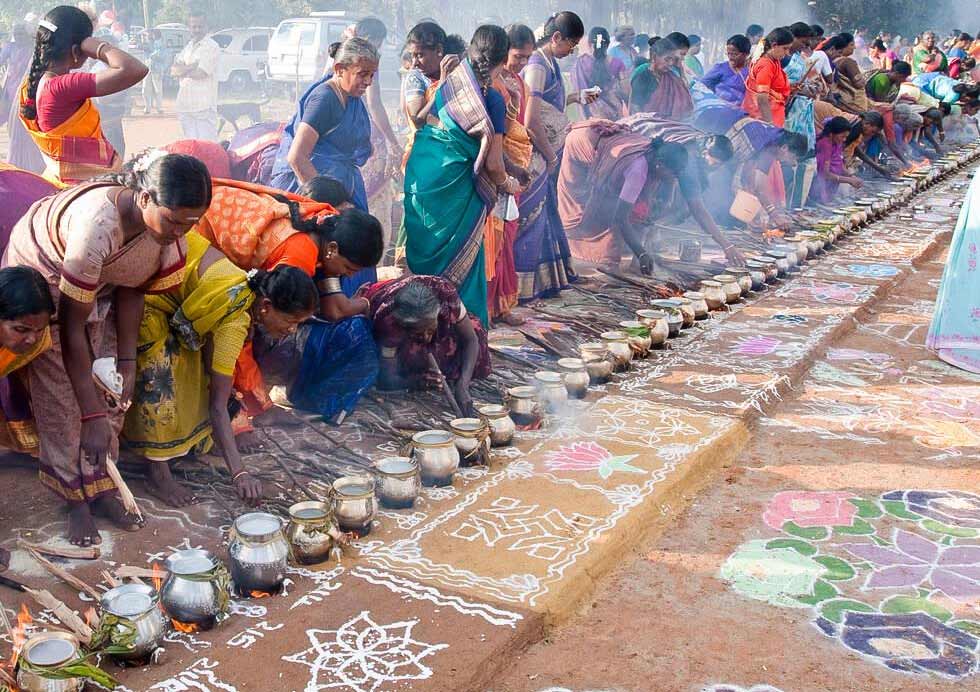
In conclusion, Pongal in Puducherry is not just an agricultural festival but a comprehensive cultural celebration that strengthens family bonds, reinforces Tamil identity, and connects urban life with rural traditions. It brings together people from all backgrounds in festivities that have been preserved for generations, showcasing the rich cultural heritage of the Tamil community in Puducherry.
Pongal is more than a harvest festival; it is a living tradition that showcases the cultural values and agricultural roots of the Tamil community in Puducherry. As one of the most important festivals in the territory, it represents the community's commitment to preserving their heritage while adapting to contemporary urban life. The festival stands as a testament to the rich cultural heritage that makes Puducherry unique among Indian union territories.
The International Yoga Festival in Puducherry has emerged as a major spiritual and wellness event that attracts participants from around the world. Building on Puducherry's reputation as a center of spiritual exploration thanks to Sri Aurobindo and The Mother, this festival celebrates yoga, meditation, and holistic living. The week-long event showcases Puducherry's position as a destination for spiritual tourism and conscious living.
The International Yoga Festival is not just a wellness event but a reaffirmation of Puducherry's identity as a spiritual destination. From the diverse yoga practices to the meditation sessions, and from the wellness workshops to the cultural programs, every aspect reflects Puducherry's character as a territory that values both physical well-being and spiritual growth. The festival's unique blend of traditional yoga teachings and contemporary wellness approaches makes it an essential part of Puducherry's cultural and spiritual calendar.
The festivals of Puducherry showcase its unique character as a union territory where Tamil traditions, French heritage, and spiritual exploration create a rich cultural tapestry. From the French elegance of Bastille Day to the Tamil agricultural celebrations of Pongal, and from the spiritual depth of the Yoga Festival to various religious observances, every festival reflects Puducherry's spirit of cultural fusion and harmony. This coexistence of different traditions makes Puducherry a unique example of cultural diversity in India, where European and Indian traditions create a vibrant cultural mosaic that is distinctly Pondicherrian while being integrally Indian.
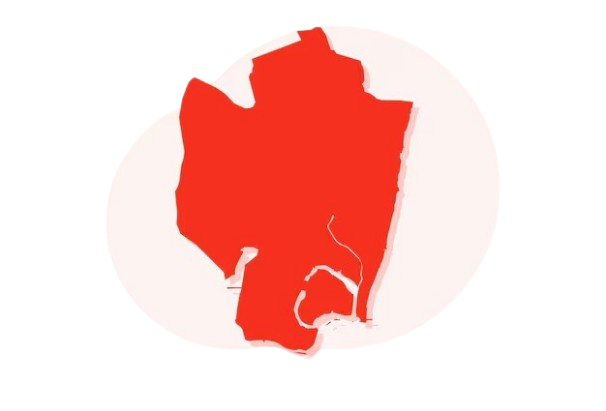
Puducherry, with its unique blend of French colonial charm and Tamil cultural vibrancy, boasts some of India's most distinctive tourist destinations that beautifully combine historical architecture, spiritual significance, and coastal beauty. Its famous places are not only tourist attractions but also integral to the territory's identity, where yellow-washed colonial buildings stand alongside ancient temples and spiritual communities thrive beside bustling markets. Each destination plays a distinctive role in shaping Puducherry's character and pride, reflecting the territory's journey from French colonial outpost to beloved Indian union territory while preserving its unique cosmopolitan atmosphere.
The French Quarter, also known as White Town, is the historic and cultural heart of Puducherry, renowned for its well-preserved colonial architecture, charming streets, and distinctive Franco-Tamil atmosphere. This picturesque neighborhood between the Promenade Beach and the canal represents the lasting French influence in Puducherry and serves as the territory's most iconic and photographed area. The French Quarter beautifully preserves its colonial heritage while adapting to contemporary life, making it Puducherry's primary tourist attraction and the face of its unique identity.


The Promenade Beach, also known as Goubert Avenue, is Puducherry's most famous waterfront, stretching 1.5 kilometers along the Bay of Bengal through the heart of the French Quarter. This beautifully maintained seaside promenade represents Puducherry's coastal charm and serves as the social hub of the city, where residents and visitors gather to enjoy sea breezes, stunning sunrises, and the relaxed atmosphere that defines Pondicherrian life.
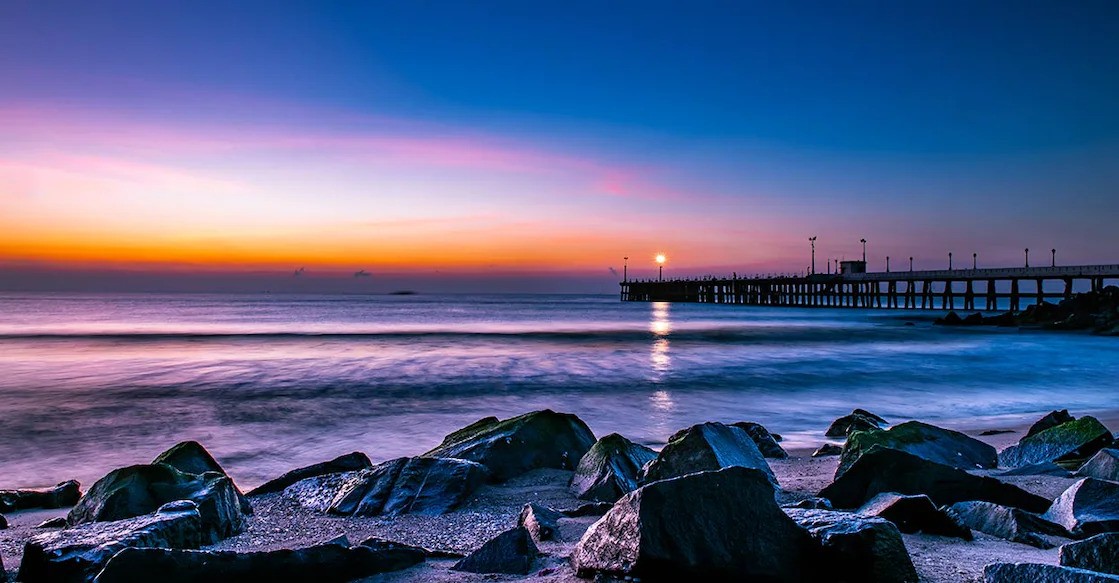
The Promenade features a wide pedestrian walkway lined with palm trees, colonial-style street lamps, and viewing platforms. The beach itself has black sand and moderate waves, with swimming prohibited due to strong currents, which preserves its clean and peaceful character. The promenade comes alive in the early morning with walkers and yoga practitioners, and in the evening with families, couples, and tourists enjoying the cool sea breeze and spectacular views.
The Promenade Beach is not just a recreational space but also an important historical and cultural landmark. It faces several significant buildings including the French War Memorial, Gandhi Memorial, and the old lighthouse. The prohibition of vehicular traffic during evening hours creates a pedestrian-friendly environment perfect for leisurely strolls and social interactions. The nearby French Quarter buildings provide a beautiful backdrop, especially when illuminated at night.
From a historical perspective, the Promenade represents the French colonial approach to urban planning that prioritized public spaces and aesthetic considerations. Its continued maintenance and popularity demonstrate Puducherry's commitment to preserving its heritage while providing quality public infrastructure. The promenade also serves as a venue for public events, festivals, and cultural performances throughout the year.
Today, the Promenade Beach stands as a symbol of Puducherry's quality of life and its blend of natural beauty and architectural heritage. It represents the territory's understanding that great cities need beautiful public spaces that enhance human well-being and social interaction.
In conclusion, the Promenade Beach is much more than just a waterfront—it is the living room of Puducherry where the community comes together, where history meets contemporary life, and where the territory's unique character is most palpable. It serves as a constant reminder of Puducherry's special charm that continues to captivate residents and visitors alike.
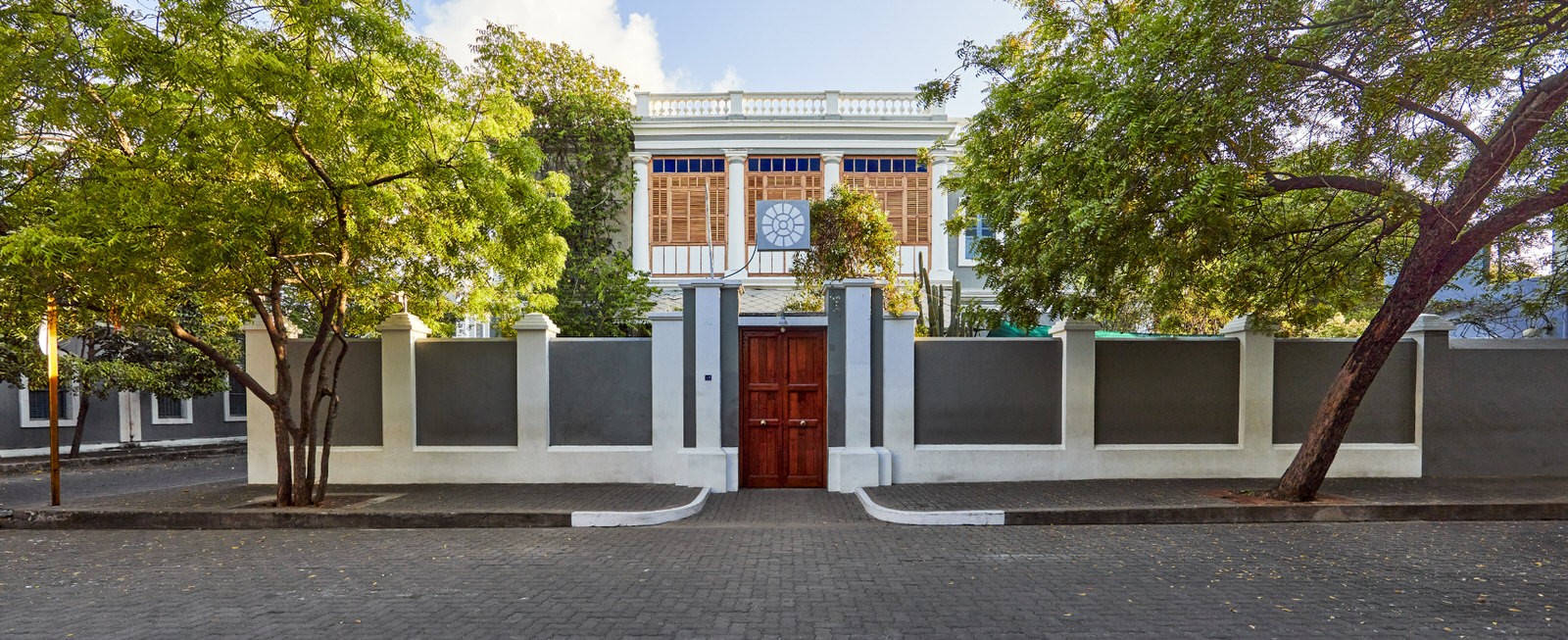
Sri Aurobindo Ashram is one of India's most famous spiritual communities, founded in 1926 by Sri Aurobindo and his spiritual collaborator, The Mother. Located in the French Quarter of Puducherry, this ashram has attracted spiritual seekers from around the world and established Puducherry as a major center of integral yoga and conscious living. The ashram represents the spiritual dimension of Puducherry's identity and its contribution to global spiritual thought.
The ashram complex includes the main building where Sri Aurobindo lived and worked, the samadhi (memorial) of Sri Aurobindo and The Mother, meditation halls, libraries, and various departments that handle the community's activities. Unlike traditional ashrams, Sri Aurobindo Ashram doesn't emphasize renunciation but rather encourages spiritual practice within daily life. The atmosphere is serene but active, with residents engaged in various works considered as offerings to the Divine.
Sri Aurobindo Ashram is not just a spiritual institution but also an important cultural and educational center. It runs schools, publishing facilities, and research institutions that propagate Sri Aurobindo's vision of integral yoga and human evolution. The ashram's approach to spirituality—emphasizing the transformation of human life rather than escape from it—has influenced spiritual movements worldwide.
From a philosophical perspective, the ashram represents Sri Aurobindo's vision of spiritual evolution that integrates all aspects of human existence—physical, vital, mental, and spiritual. The teachings emphasize the discovery of one's true self, the transformation of nature, and the realization of a divine life on earth. This integrative approach has made the ashram particularly appealing to modern seekers balancing spiritual aspirations with worldly responsibilities.
In conclusion, Sri Aurobindo Ashram is more than just a spiritual community—it is the philosophical heart of Puducherry that has shaped the territory's identity as a center of spiritual exploration. It represents a unique approach to spirituality that is both deeply Indian and universally relevant, creating a space where people from all backgrounds can explore consciousness transformation while engaging meaningfully with the world.

Notre Dame des Anges (Our Lady of Angels) is one of Puducherry's most beautiful churches, showcasing the territory's French Catholic heritage through its stunning architecture and spiritual significance. Located in the French Quarter, this 19th-century church represents the French colonial religious legacy and serves as an active place of worship for Puducherry's Catholic community while attracting visitors for its architectural beauty.
The church features a striking facade with twin spires and a classical French colonial design adapted to the tropical climate. The interior is equally impressive with vaulted ceilings, stained glass windows imported from France, and an altar made of marble from Italy. The church's simple yet elegant design creates an atmosphere of peace and reverence, while its location near the Promenade Beach makes it a prominent landmark in Puducherry's skyline.
Notre Dame des Anges is not just a religious site but also an important historical monument. It was built between 1851 and 1855 to replace an earlier church that had become too small for Puducherry's growing Catholic population. The church has witnessed the territory's transition from French colony to Indian union territory, maintaining its religious functions throughout these changes. It represents the continuity of Catholic worship in Puducherry and the French contribution to the territory's religious landscape.
From an architectural perspective, Notre Dame des Anges represents the adaptation of European church design to Indian conditions. The use of local materials combined with European architectural elements creates a unique Indo-French aesthetic. The church's design includes features that provide ventilation and light appropriate for the tropical climate while maintaining traditional Catholic church architecture.
In conclusion, Notre Dame des Anges is not just a place of worship but a vital cultural and historical landmark that embodies Puducherry's French Catholic heritage. It represents the religious diversity of the territory while serving as a beautiful example of colonial architecture, creating a spiritual space that inspires both devotion and appreciation for architectural beauty.
The French War Memorial is a significant historical monument located on the Promenade Beach, commemorating French soldiers from Puducherry who died during World War I. This elegant memorial represents Puducherry's French military history and serves as a reminder of the territory's connections with global historical events. The memorial is especially beautiful when illuminated at night and during ceremonial occasions.
The memorial features a classical design with a central monument surrounded by well-maintained gardens. Inscribed with the names of French soldiers who died in the Great War, it serves as a somber reminder of the human cost of conflict. The memorial is particularly significant because it represents soldiers from a French colony who fought in a European war, highlighting the complex connections between colonial territories and metropolitan France.
The French War Memorial is not just a historical monument but also an important symbol of Franco-Indian relations. It is maintained by the Indian government as part of Puducherry's heritage, demonstrating India's respect for the territory's French history. The memorial serves as a venue for commemorative ceremonies, especially on Bastille Day when French officials and local dignitaries pay their respects.
From a historical perspective, the memorial represents Puducherry's participation in global events through its French connection. The soldiers commemorated here were predominantly Indians from Puducherry who served in French military units, illustrating the complex identities of colonial subjects. The memorial's preservation after Puducherry became part of India demonstrates a mature approach to colonial history that acknowledges multiple narratives.
In conclusion, the French War Memorial is more than just a war monument—it is a symbol of Puducherry's layered history and its position at the intersection of French and Indian narratives. It represents the territory's respect for its complex past while looking toward a future of continued cultural exchange and understanding between India and France.
Bharathi Park, formerly known as Government Park, is the central public garden of Puducherry located in the heart of the French Quarter. This beautifully landscaped park represents the French tradition of urban green spaces and serves as a popular recreational area for residents and visitors. The park's strategic location near important government buildings and its peaceful atmosphere make it an essential feature of Puducherry's urban landscape.
The park features French-style landscaping with symmetrical pathways, fountains, flower beds, and shaded seating areas. The centerpiece is the Aayi Mandapam, a beautiful white monument built during Napoleon III's reign that once served as the entrance to an underground water reservoir. The park is home to various tree species, both native and exotic, that provide shade and enhance its aesthetic appeal. Well-maintained lawns and seasonal flowers create a colorful and inviting environment throughout the year.
Bharathi Park is not just a recreational space but also an important historical site. It was originally part of the French governor's estate and was transformed into a public park during the colonial period. The park has witnessed numerous historical events and public gatherings throughout Puducherry's history. Its name was changed after independence to honor Subramania Bharati, the Tamil poet and independence activist who lived in Puducherry.
From an urban planning perspective, Bharathi Park represents the European tradition of incorporating green lungs into city centers. Its location between the French Quarter and the Indian Quarter symbolizes the connection between Puducherry's different cultural areas. The park serves multiple functions—as a space for relaxation, social interaction, cultural events, and political gatherings—demonstrating how public spaces can enhance urban quality of life.
In conclusion, Bharathi Park is more than just a garden—it is the green heart of Puducherry that provides respite from urban bustle while connecting different parts of the city. It represents the territory's commitment to maintaining quality public spaces that serve both aesthetic and functional purposes, creating an environment that enhances the well-being of residents and the experience of visitors.
The French Quarter is more than just a historic neighborhood — it is the living soul of Puducherry where colonial architecture meets contemporary life, and where French elegance blends with Tamil vibrancy. From its charming yellow-washed buildings to its tranquil promenade, from its spiritual communities to its cultural landmarks, the French Quarter represents the perfect synthesis of heritage and modernity. Truly, the French Quarter embodies the spirit of Puducherry as it welcomes visitors from around the world while honoring its unique historical legacy, serving as a model for heritage conservation and cultural tourism in India.
Auroville, known as "The City of Dawn," is an experimental township located about 8 km northwest of Puducherry, founded in 1968 by The Mother of the Sri Aurobindo Ashram. This unique international community aims to realize human unity and transform consciousness through collective living. Auroville represents Puducherry's spiritual dimension and its contribution to global experiments in sustainable living and human development.
Auroville is not just an alternative community but also a symbol of human aspiration for unity, sustainability, and conscious evolution. With its innovative approaches to community living, environmental stewardship, and spiritual practice, Auroville rightfully earns its place as one of India's most unique social experiments, making it a proud representative of Puducherry's spiritual heritage and its contribution to global conversations about human future and consciousness transformation.
Paradise Beach, also known as Plage Paradiso, is one of Puducherry's most beautiful and secluded beaches, accessible only by boat from Chunnambar Boat House. Located where the Chunnambar River meets the Bay of Bengal, this pristine beach offers white sands, clear blue waters, and a tranquil atmosphere away from the city crowds. Paradise Beach represents Puducherry's natural coastal beauty and its potential for sustainable eco-tourism.
Paradise Beach stands as a symbol of Puducherry's natural coastal assets and its potential for sustainable tourism development. From the scenic boat journey to the pristine shoreline, and from the recreational opportunities to the tranquil environment, the beach reflects Puducherry's diversity as a destination that offers both cultural richness and natural beauty. Its role as a controlled-access beach makes Paradise Beach an essential component of Puducherry's tourism landscape, demonstrating how natural attractions can be preserved while allowing public enjoyment.
The tourist destinations of Puducherry reflect the extraordinary character and multiple dimensions of the union territory. While the French Quarter showcases colonial heritage and urban charm, Auroville represents spiritual innovation and community experimentation, and Paradise Beach demonstrates the territory's natural coastal beauty. Together, these famous places present a comprehensive picture of Puducherry's appeal as a destination that offers cultural richness, spiritual depth, and natural splendor. They showcase a territory where French elegance and Tamil vibrancy create a unique synthesis, where spiritual exploration and earthly pleasures coexist, and where heritage conservation and innovative thinking combine to create an experience that captivates visitors and makes Puducherry truly one of India's most distinctive destinations.
The cuisine of Puducherry represents a fascinating culinary fusion where French gastronomic traditions meet Tamil flavors and techniques, creating a unique food culture that distinguishes the territory from other regions of India. This Franco-Tamil cuisine reflects Puducherry's colonial history and cultural synthesis, offering dishes that blend European cooking methods with South Indian spices and ingredients. From French-inspired bakeries to traditional Tamil meals, and from fusion dishes to coastal seafood specialties, Puducherry's culinary scene offers a delicious journey through its multicultural heritage.
Franco-Tamil fusion cuisine is the culinary embodiment of Puducherry's unique cultural identity, combining French cooking techniques and presentations with Tamil flavors and ingredients. This distinctive food tradition developed during the colonial period and has evolved into a sophisticated culinary style that represents the territory's special character. Franco-Tamil dishes can be found in both upscale restaurants and local eateries, offering a taste of Puducherry's multicultural heritage.

Franco-Tamil fusion cuisine is not just a culinary style but a delicious expression of Puducherry's cultural synthesis and historical legacy. From sophisticated restaurant creations to home-style adaptations, these dishes tell the story of French and Tamil cultures meeting and creating something new and wonderful. The continued innovation in Franco-Tamil cooking ensures that this culinary tradition remains vibrant and relevant, offering both residents and visitors a unique gastronomic experience that can only be found in Puducherry.
Puducherry's French bakeries and cafés are among the territory's most beloved culinary institutions, preserving European baking traditions while adapting to local tastes and ingredients. These establishments, concentrated in the French Quarter but found throughout Puducherry, offer authentic French breads, pastries, and coffee alongside Indian-inspired creations. The bakery culture represents the lasting French influence on Puducherry's food scene and its importance in daily life.
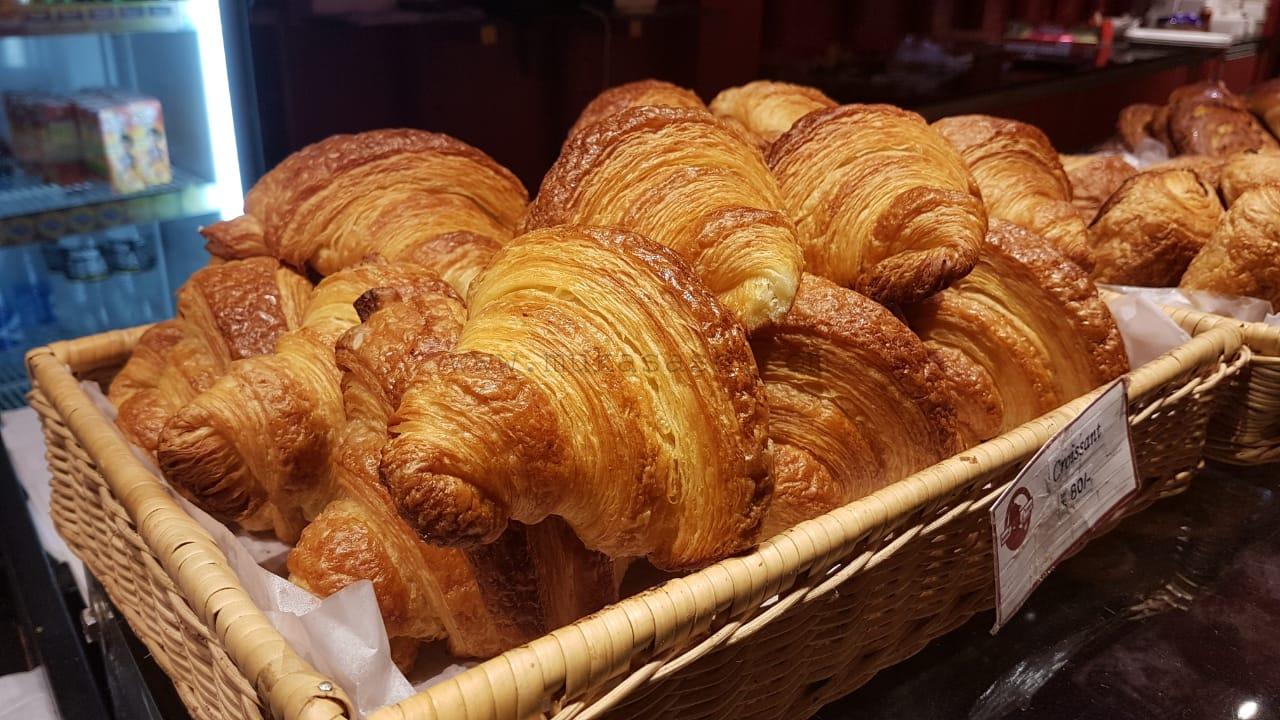
Puducherry's French bakeries and cafés represent the delightful persistence of European culinary traditions in an Indian context. From the morning ritual of buying fresh baguettes to the leisurely enjoyment of coffee and pastries, these establishments enrich Puducherry's food culture and daily life. They serve as living reminders of the territory's French connection while adapting to contemporary tastes and needs, creating spaces where European and Indian food traditions coexist and enhance each other, much like Puducherry itself.
Traditional Tamil cuisine forms the culinary foundation of Puducherry, representing the territory's deep roots in South Indian food culture while showing some French influences in presentation and occasional ingredients. This robust and flavorful cuisine emphasizes rice, lentils, coconut, and local spices, creating dishes that are both nutritious and delicious. Tamil food in Puducherry maintains its authentic character while occasionally incorporating elements from French culinary traditions.
Traditional Tamil cuisine in Puducherry represents the enduring culinary heritage of the territory's majority community, offering flavors and techniques that have been perfected over centuries. While maintaining its essential character, this cuisine shows how food traditions can absorb outside influences while preserving their core identity. The continued popularity of authentic Tamil food ensures that Puducherry's culinary landscape remains grounded in its South Indian roots while embracing the creativity that comes from cultural exchange, creating a food culture that is both traditional and dynamic.
Puducherry's coastal location ensures a rich variety of seafood that features prominently in both Tamil and Franco-Tamil cuisines. The territory's fishermen bring in daily catches from the Bay of Bengal, providing fresh fish, prawns, crabs, and other seafood that form the basis of many local dishes. Seafood preparation in Puducherry shows both traditional Tamil methods and French influences, creating a diverse range of delicious options for seafood lovers.
Seafood in Puducherry represents the territory's coastal bounty and its creative approach to culinary traditions. From traditional Tamil fish curries to French-inspired seafood preparations, and from simple beachside grills to sophisticated fusion creations, Puducherry's seafood offerings demonstrate how local ingredients can be transformed through different cultural lenses. The abundance and quality of seafood ensure that it remains a central part of Puducherry's food identity, offering both residents and visitors delicious tastes of the Bay of Bengal interpreted through the territory's unique cultural synthesis.
The cuisine of Puducherry represents a delicious journey through the territory's multicultural heritage and historical legacy. From the sophisticated fusion of Franco-Tamil cooking to the authentic traditions of Tamil cuisine, and from the European elegance of French bakeries to the coastal bounty of seafood preparations, each culinary tradition tells a story of cultural exchange and creative adaptation. Puducherry's food culture not only preserves traditional flavors and techniques but also continuously evolves through innovation and cross-cultural inspiration. It represents the territory's unique position as a bridge between Europe and South India, creating a gastronomic landscape that is diverse, flavorful, and truly distinctive, much like Puducherry itself—a place where different cultures meet and create something wonderful together.